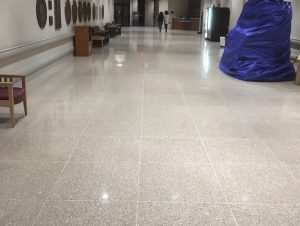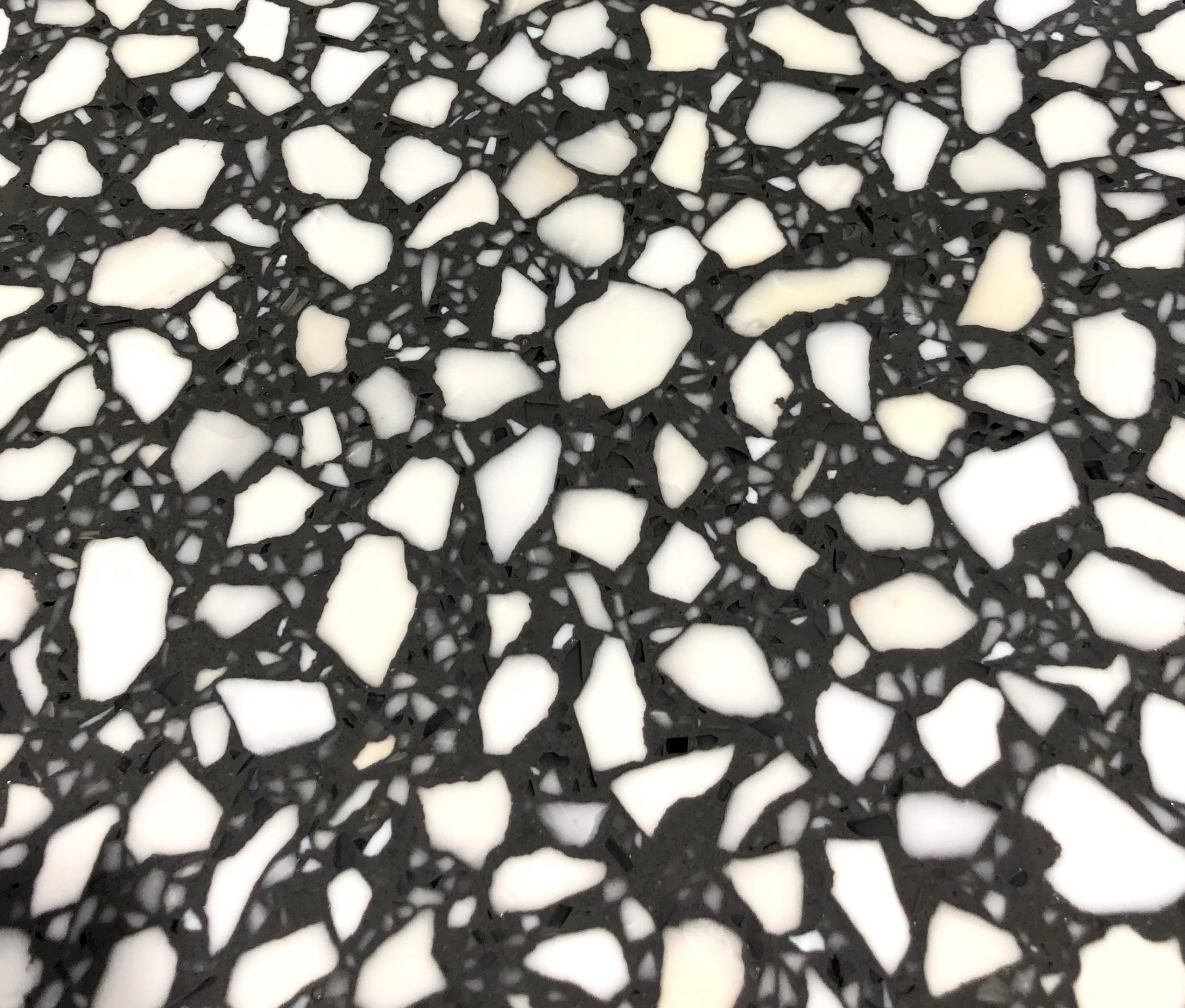Terrazzo tile is one of the most popular and widely used floorings in the modern world today. It is an option that requires minimal maintenance, will stand the test of time, and can be used on both residential and commercial structures. In this article, we will explore what terrazzo tile entails, the background of terrazzo, and why it is ideal for flooring your home.
What is Terrazzo?
Terrazzo is a composite material, which in one form or another has been used by various civilizations for centuries. It is produced by interlocking chips of marble, quartz, granite, glass or any other appropriate material with a suitable binder. The binder can be cementitious, polymeric (like epoxy) or can be a combination of cementitious and polymeric systems. After that, the surface is burnished to have a glossy finish and the designs of the installed materials become apparent.
What is Terrazzo Tile?
Terrazzo tile is, in fact, a decentralized or pre-cast version of terrazzo. It is as beautiful and tough as the stone version, but in tile format, which is easier to fix and clean. Terrazzo tiles are made by laying down the terrazzo mix into molds, letting it harden, and then polishing it to have a smooth, shiny surface. This process offers the benefit of uniformity in design and thickness, especially for large-scale projects and installations.
The Evolution of Terrazzo Flooring
Terrazzo was invented in Venice by construction workers who were looking for an inexpensive flooring material. Originally developed by Venetian construction workers, terrazzo has evolved significantly over the centuries, using scraps of marble to produce beautiful and practical working surfaces. Today, terrazzo flooring has become a modern, sustainable, and eco-friendly choice that is installed in many luxurious urban offices and homes.
Advantages of Terrazzo Tile
1. Durability
Terrazzo tiles are famous due to their sturdiness and ability to withstand pressure and different weather conditions. They are not susceptible to chipping, cracking or wearing out making them suitable for areas that experience a lot of traffic.
2. Aesthetic Versatility
Terrazzo is also versatile when it comes to designing since it can be made from a wide range of materials. Terrazzo can be as simple as a traditional white marble or as exciting a colorful pattern as one can think of.
3. Eco-Friendly
Terrazzo is an environmentally friendly flooring solution. Most manufacturers incorporate recycled materials in their terrazzo production, thus decreasing wastage and harm to the environment.
4. Low Maintenance
Terrazzo tiles are low on maintenance once installed and sealed properly. To maintain the appearance of the tiles, it is sufficient to clean the tiles with a damp mop and to reseal the tiles occasionally.
5. Cost-Effective
Largely due to the higher initial cost per piece, terrazzo tile may be more expensive than certain other flooring materials from which to purchase, although its durability and ease of maintenance make it cheaper in the long run.
Applications of Terrazzo Tile
Terrazzo tiles are versatile and can be used in various settings, including:
1. Residential Spaces
Terrazzo tiles should be incorporated into kitchens, bathrooms and entryways due to its uniqueness and durability.

2. Commercial Buildings
Terrazzo tiles are commonly used in offices, hotels, and in retail stores since they are stylish and durable.

3. Public Spaces
Terrazzo is recurrent in areas such as airports, schools, and hospitals because of its durability and cleanness.
Installation of Terrazzo Tile
Installing terrazzo tiles involves several steps:
1. Surface Preparation
The subfloor must be free from dirt, moisture, and unevenness so as to form a proper bond with the tiles.
2. Laying the Tiles
Tiles are fixed on the substrate using a thin-set adhesive and proper attention is paid to the grout spacings and alignments of the tiles.
3. Grouting
After the adhesive hardens, grout is used to fulfill the space in between the tiles.
4. Polishing and Sealing
The surface is polished to make it shiny and then sealed to protect against stains and moisture.
Comparison with Traditional Terrazzo Flooring
While both terrazzo tiles and traditional terrazzo flooring offer similar aesthetic and functional benefits, there are distinct differences:
1. Installation
Traditional terrazzo is created by applying a blend of marble chips and cementitious binder directly to the substrate and then ground down to a desired smoothness. It can take a lot of time and effort to complete this process. Terrazzo tiles, on the other hand, are precast and require only to be bonded to the substrate, which makes the installation much faster and easier.
2. Flexibility in Design
Terrazzo tiles are more flexible in design than terrazzo floors because they are produced in specific sizes and shapes. Traditional terrazzo, conversely, enables one to come up with free flowing and unique patterns on the floor in the building.
3. Repair and Replacement
Individual terrazzo tiles can be removed and replaced without disturbing the other tiles, unlike typical terrazzo repairs that may involve more seams to work the new material into the existing floor.
Types of Terrazzo Systems
Terrazzo flooring comes in various systems, each suited for different Terrazzo applications and aesthetic preferences. Here’s a brief overview of the main types of terrazzo systems:
1. Epoxy Terrazzo
Epoxy terrazzo offers design versatility and comes in various colour options, and is ideal for interior applications. It has a thin-set system that is easier to install and is less bulky compared to other brands; it is also resistant to chemicals and stains.
2. Cementitious Terrazzo
This traditional terrazzo system involves the use of cement as the matrix, and it can be used indoors as well as outdoors. It offers a traditional terrazzo appearance that is very durable and is ideal for restoration work to replicate styles.
3. Monolithic Terrazzo
This system includes applying a cementitious or epoxy mix directly over the concrete slab. It provides a smooth surface and is commonly employed in large business buildings, for it is vital for it to have longevity and uniform flooring.
4. Sand Cushion Terrazzo
There are various types of terrazzo, and this type of terrazzo has a sand cushion layer beneath the terrazzo mix to avoid cracking from substrate movement. It is most suitable for areas with large coverage and areas that get a lot of traffic.
5. Bonded Terrazzo
Bonded terrazzo is where a cementitious terrazzo mix is applied to a concrete substrate with a layer of sand and cement in between. This system is reliable and appropriate to be implemented in places where many items are likely to be shifted.
Every terrazzo system has its benefits, and the type is selected depending on the project location, look, and performance characteristics.
Conclusion
Terrazzo tile is a contemporary material that incorporates the beauty of the old-world terrazzo method but in a more durable style. Regardless of whether you’re constructing a residential or commercial building or even fitting out a public building, terrazzo tiles are a perfect combination of elegance, longevity, and sustainability. Learning more about terrazzo tile as well as the numerous advantages that it has to offer can assist you in making the right choice. This guide explores various aspects of terrazzo, such as how it is made and installed and how it can be used in creative ways to enhance any architectural and interior design project.
Are you looking to elevate the aesthetics and functionality of your commercial or residential spaces? Look no further than Angelozzi Terrazzo, the industry leader in premium terrazzo flooring solutions. With decades of experience and a commitment to excellence, we provide stunning, durable, and eco-friendly terrazzo installations that stand the test of time.
For more information, contact us at (856) 753-3200 or schedule a consultation with our experts today!

